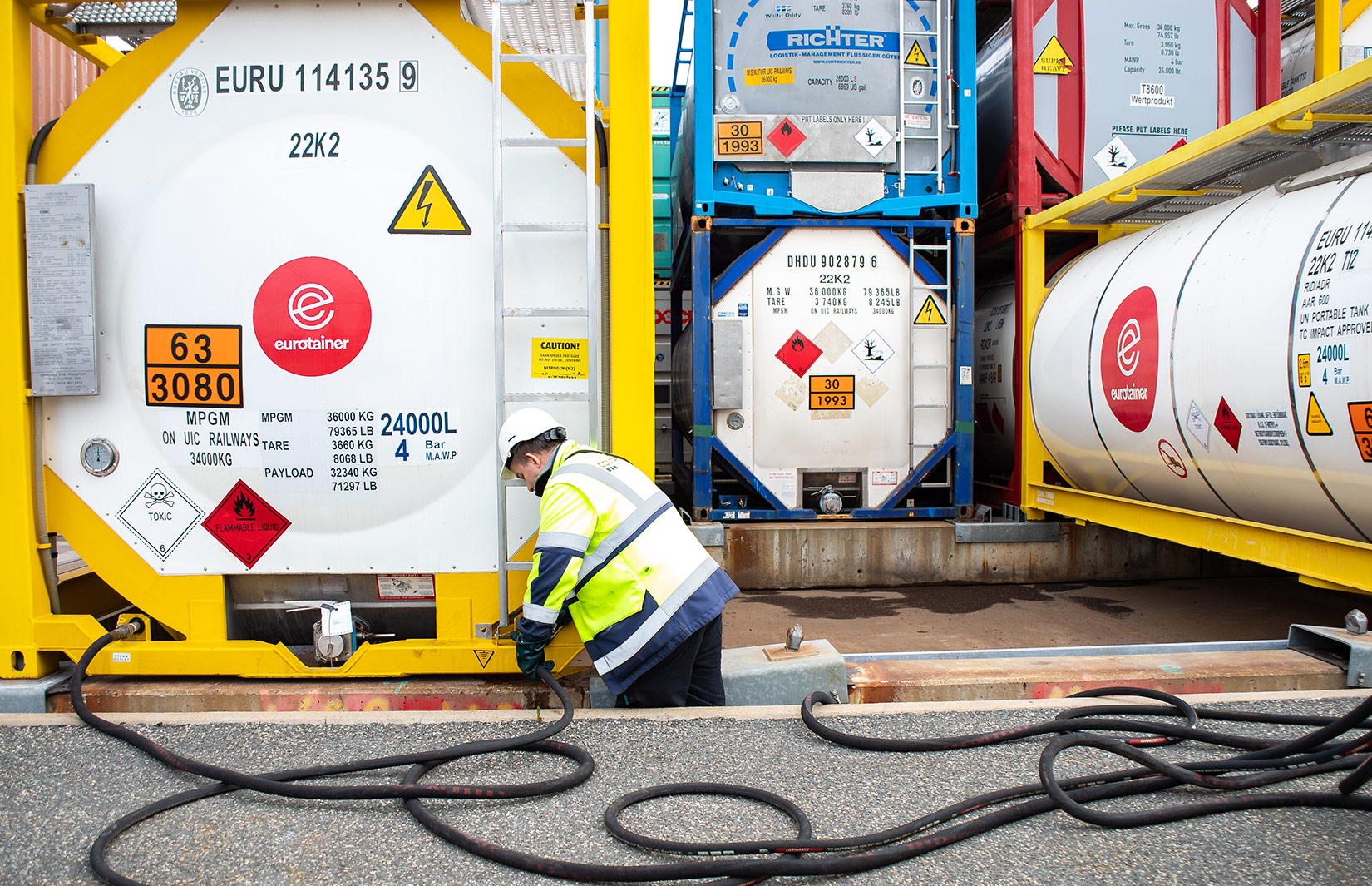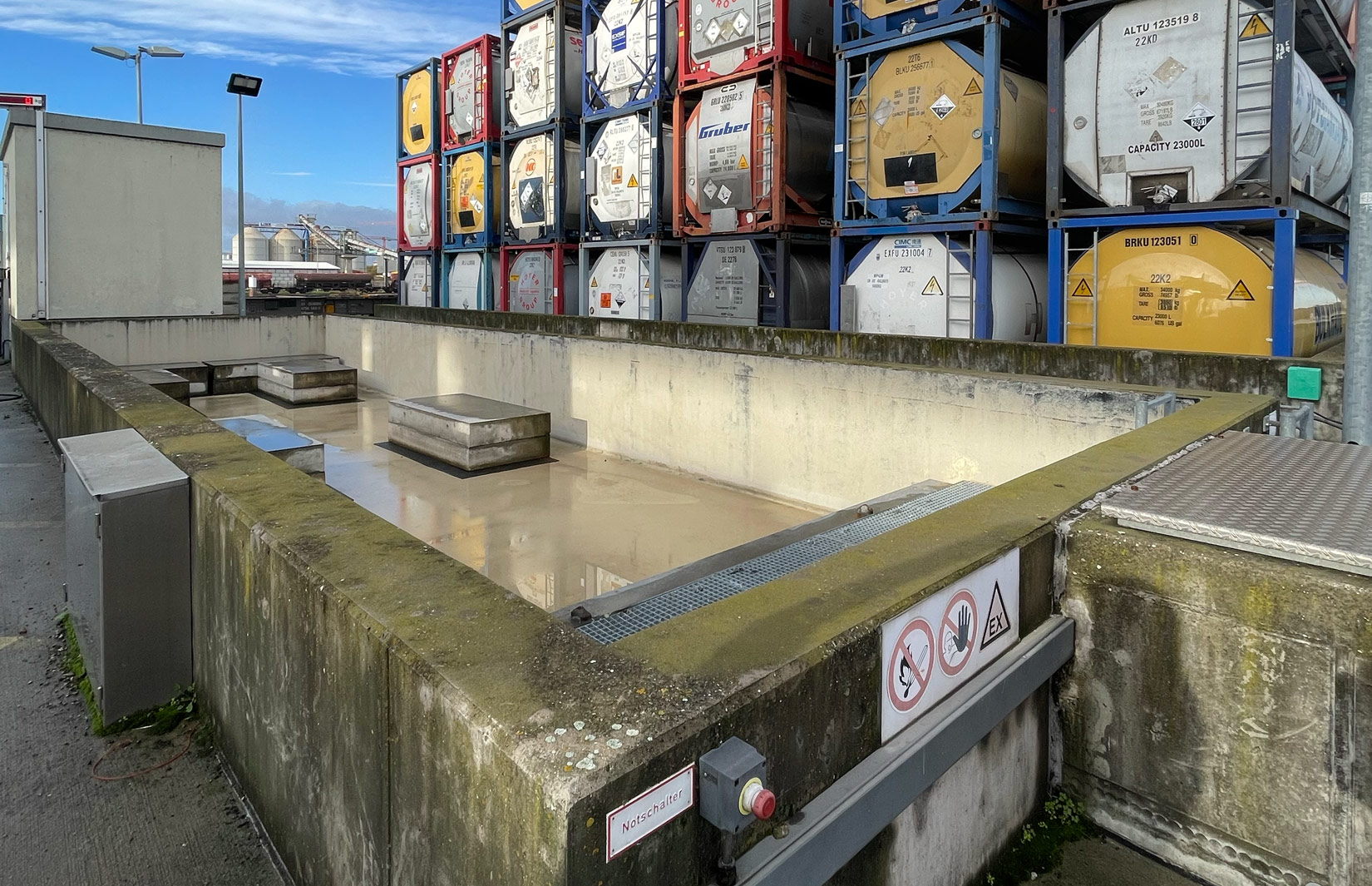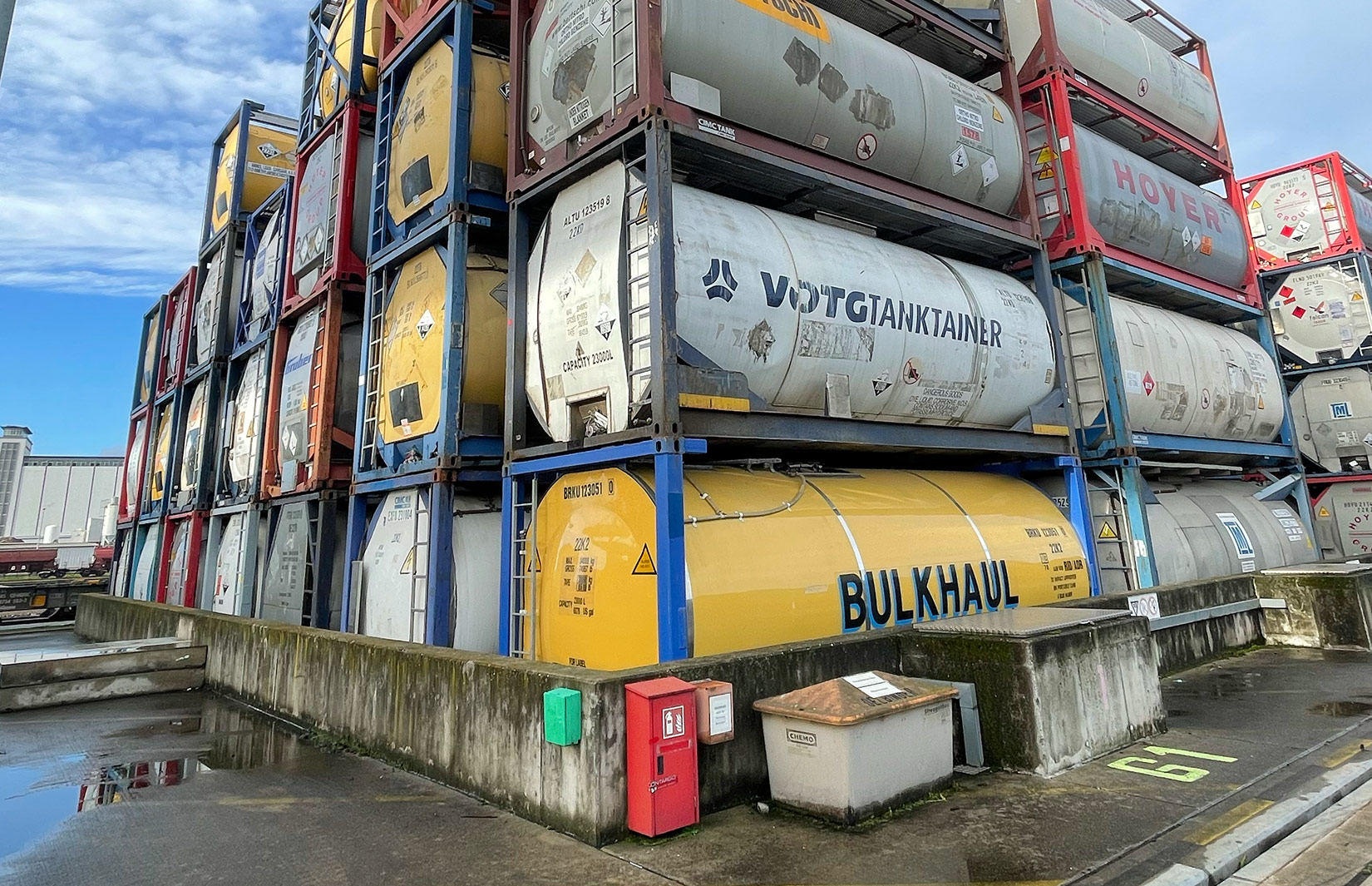
Safer shipping
Handling dangerous goods is a highly sensitive matter. This challenging sector requires a reliable and careful service provider. Most of our ships have double hulls to provide top safety for your goods and the environment.
Our policy is "Responsible care". And this means that we need all of our employees to relate consistently to their task. Our goal is to completely avoid all errors, since this is the only way to ensure true safety and ease of mind for our customers.
Our planners, drivers and all members of the loading team are trained in the current statutory requirements and the latest standards and technologies at regular training courses. Ongoing monitoring ensures that these standards are maintained.
What we can offer you
Contargo has many years of experience in transporting and handling dangerous goods. Our certifications include DIN EN ISO 9001 and DIN EN 14001, and we've integrated all necessary processes and responsibilities for handling dangerous goods into our management system.
We have qualified personnel who receive regular training internally and from external providers. All of the barges, trains and trucks we use have the permits and equipment necessary for the transport of dangerous goods in containers. Our modern communications network ensures the gap-free transfer of all required information. Compliance with all legal provisions and regulations is regularly checked by internal and external experts. We make sure that the dangerous goods entrusted to us are transported safely and punctually.
What do we need from you?
We need your help to guarantee the safe and punctual transportation of your goods.
Here's what we need to know:
- Classification of the dangerous goods to be transported
- UN number
- Confirmation that the nature of the goods, packages and containers/tank containers comply with regulations (ADN, IMDG Code etc.)
- Description of the goods in accordance with regulations governing dangerous goods, product name and technical designation
- Container number
- Number of packages and total weight
- Written instructions for how to act in the case of an accident or incident (accident procedures sheet)
- Name and address of the consignor and consignee of the goods
- Special instructions for the carrier (e.g. route specifications)
To avoid errors and misunderstandings, please provide all of this information in writing.
Abbr. | Description | Transport mode | Scope |
| GGBefG | German Act on the Transportation of Dangerous Goods | Road, water, rail, air | National legal framework, Federal Republic of Germany |
| GGVSEB | German Ordinance on the National and International Carriage of Dangerous Goods by Road, Rail, and Inland Waterways *) | Road, rail, inland waterways | National ordinance, Federal Republic of Germany |
| ADR | Agreement concerning the International Carriage of Dangerous Goods by Road | Road | International (applies to all ADR signatories) |
| RID | Regulation concerning the International Carriage of Dangerous Goods by Rail | Rail | International (applies to all RIDsignatories) |
| ADN | European Agreement concerning the International Carriage of Dangerous Goods by Inland Waterways | Inland waterways | Rhine |
| IMDG-Code | International Maritime Dangerous Goods Code | Sea | International |
| ICAO-TI | Technical Instructions for the Safe Transport of Dangerous Goods by Air | Air | International |
| GGVSE | German Regulation on the Carriage of Dangerous Goods by Road and Rail | Road, rail | National, Federal Republic of Germany |
| GGKontrollV | German Ordinance on Controls for Transports of Dangerous Goods by Road and Within Companies | Road | National, Federal Republic of Germany |
| GGVBinSch | German Ordinance on the Shipping of Dangerous Goods on Inland Waterways | Inland waterways | National, Federal Republic of Germany |
Naturally, we will be glad to help if you have any questions regarding the transport of dangerous goods with containers.
Definition of dangerous goods
By "dangerous goods", we mean substances and objects containing substances which might, due to their nature, properties or condition, pose a danger for public safety or order, and particularly for the general public, important public property, the health and life of people and animals, and the integrity of other items when transported, and which are classified as dangerous goods in accordance with statutory provisions.
Examples of dangerous goods:
- Explosives, ammunition and fireworks
- Gases and gas mixtures
- Flammable liquids and solids and mixtures of substances liable to spontaneous combustion
- Substances which form flammable gases when they come into contact with water
- Oxidising substances and organic peroxides
- Poisonous (toxic) substances
- Infectious substances
- Radioactive substances
- Corrosive substances
- Substances which are harmful to water or the environment
Dangerous goods classes
Dangerous goods are classified into different classes. These classes denote the primary hazards that the goods in question can cause. There are also subclasses describing secondary hazards.
Why is the correct classification of dangerous goods important?
Rules and regulations governing dangerous goods are based on the assignment of the goods in question to a specific class, group and material identification number (UN number). These designations and further information such as the weight and packaging unit are used to correctly determine all other important specifications, courses of conduct and requirements for transporting the goods.
Who classifies dangerous goods?
The original consignor of the goods being transported makes the decision as to whether the goods in question are dangerous goods and, if so, how they should be classified. This is because the consignor is familiar with the goods being transported and the substances they contain, and can therefore classify them correctly. If the consignor is not also the manufacturer, the manufacturer must provide the consignor with the information required for the classification.
The consignor must make the required information available to all other parties involved in transporting the goods.
Certain hazardous substances are allowed to be transported only if they are expressly approved for transport by name.
Dangerous goods are transported all over the world. This means that the regulations to be observed are vast. Extremely extensive national and international laws, directives, agreements and regulations apply to dangerous goods.
Requirements upon the classification, packaging and labelling of dangerous goods as well as technical equipment required when transporting them are described in detail in these regulations. Organisational measures and the obligations and responsibilities of the parties involved in the transport of the goods are defined in the applicable rules and in internal process descriptions.
For historical reasons, the regulations for the various transport modes (rail, road, barge, ship and air) are described separately. However, these regulations have increasingly been harmonised.
The regulations are constantly adapted in line with new requirements and developments. Knowledge from the analysis of incidents is also used to update regulations.
Your contact person

Frank Weisbecker
Head of Corporate Services
Phone:
+49 621 178 25 200
Mobile:
+49 172 630 3 200
Mail: fweisbecker(at)contargo.net




